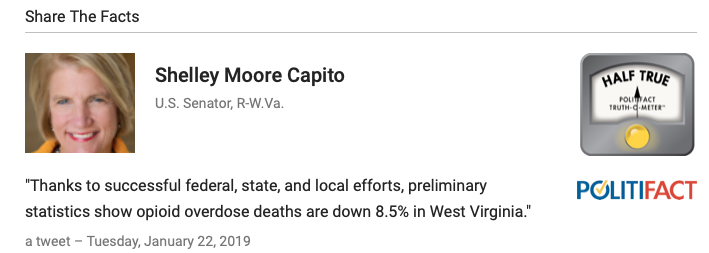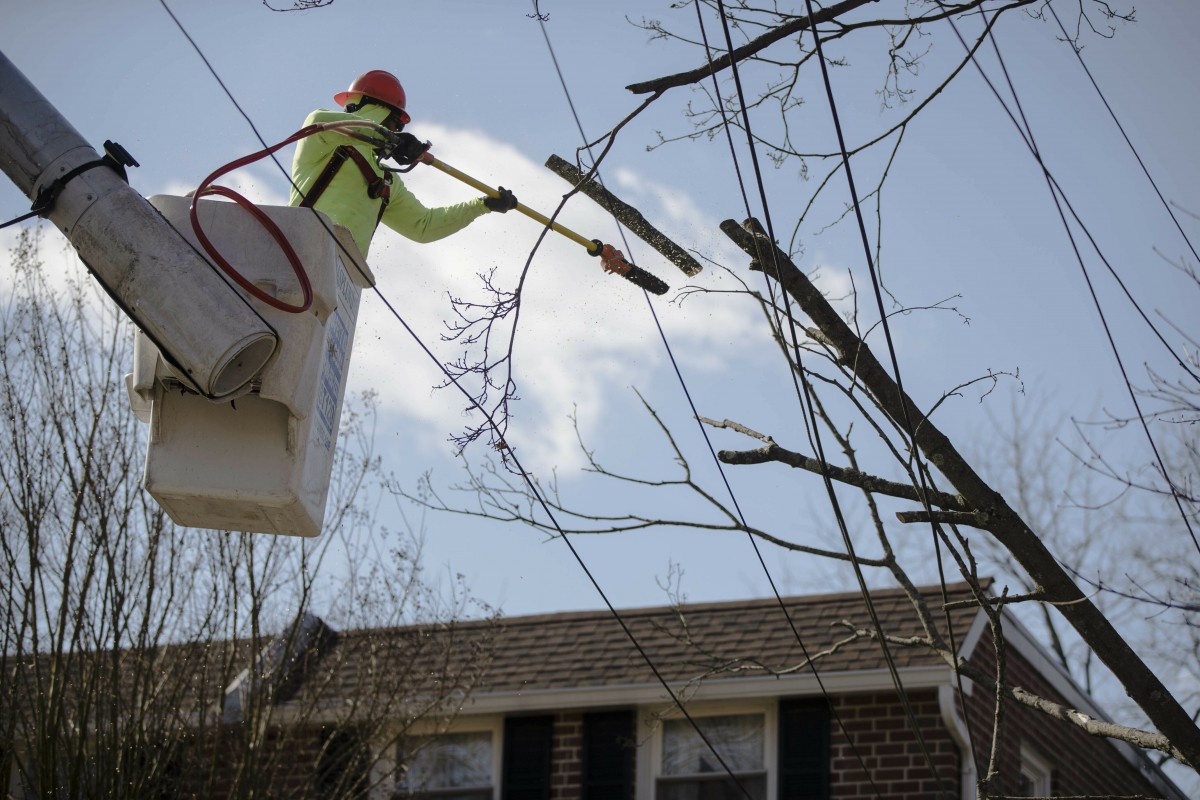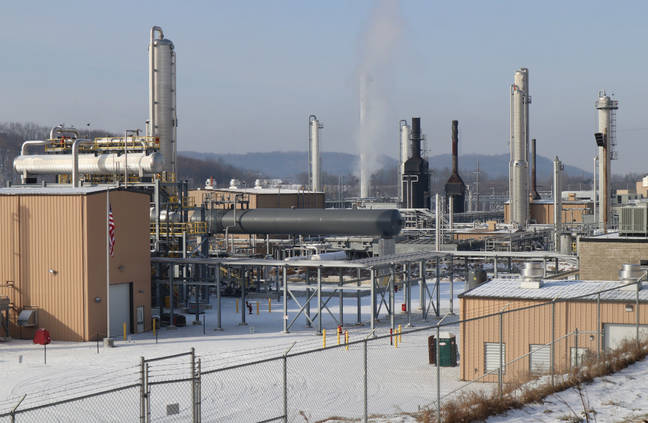Sen. Shelley Moore Capito, R-W.Va., offered a note of optimism about her state’s struggle with opioid addiction in a Jan. 22 tweet.
Capito tweeted, “Thanks to successful federal, state, and local efforts, preliminary statistics show opioid overdose deaths are down 8.5% in West Virginia. Awesome news!”
Thanks to successful federal, state, and local efforts, preliminary statistics show opioid overdose deaths are down 8.5% in West Virginia. Awesome news! https://t.co/uICcVlU7vZ— Shelley Moore Capito (@SenCapito) January 22, 2019
Is this statistic correct? Capito’s office did not respond to several inquiries, but we were able to find data that addresses the question.
Her tweet links to a USA Today article about newly released data on opioids published the same day as the tweet. Accompanying that article is a link to a related article that summarizes the state-by-state data collected by the Centers for Disease Control and Prevention.
According to the breakdown, West Virginia’s predicted 12-month number for overdose deaths from all drugs fell from 1,047 in 2017 to 958 in 2018. That’s a decrease of 8.5 percent, as Capito said.
However, we should note a couple caveats.
First, a different cut of the CDC data actually shows even stronger declines in West Virginia. Preliminary, 12-month statewide data for overdose deaths shows an 18.7 percent decline for reported deaths between July 2017 and July 2018, and a 32 percent decline for predicted deaths over the same period.
Second, the 8.5 percent decline refers to overdose deaths from all drugs, not “opioid overdose deaths,” as Capito said.
The report doesn’t break down the data for opioid deaths by state. However, other data shows patterns for different drugs, and those serve to complicate Capito’s optimism.
A CDC report detailing annual figures for 2016 and 2017 found that in West Virginia, there was a decrease in prescription opioid overdose deaths by almost 13 percent between those two years. However, during the same time period, the deaths from all opioids, including heroin and methadone, rose more than 14 percent, and the death rates from synthetic opioids other than methadone increased by more than 42 percent.
In other words, a reduction in the deaths from prescription opioids masked how fast deaths from all opioids and synthetic opioids rose over that period.
“The opioid overdose epidemic continues to worsen and evolve because of the continuing increase in deaths involving synthetic opioids,” the CDC reported, according to a Dec. 28, 2018 article in the Register Herald of Beckley, W.Va.Our ruling
Capito tweeted, “Thanks to successful federal, state, and local efforts, preliminary statistics show opioid overdose deaths are down 8.5% in West Virginia.”
This number appears in a USA Today article that summarized CDC data, and other CDC data shows even sharper declines. That’s the good news.
However, Capito misidentified the figure as opioid overdose deaths specifically, rather than overdose deaths from all drugs. In addition, a more detailed analysis shows that while prescription opioid overdose deaths are down, overdose deaths from synthetic opioids are up. This suggests a more complicated outlook for the state’s overall overdose problem.
We rate the statement Half True.
This article was originally published by PolitiFact.




